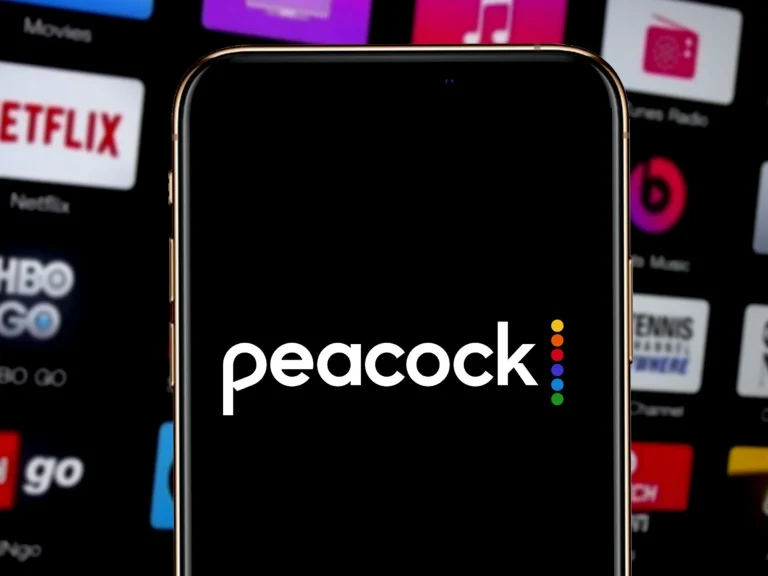Peacock, NBCUniversal’s streaming service, launched in July 2020 with a unique offering in the competitive streaming market—a free, ad-supported tier. This tier provided users access to a limited library of TV shows, movies, and live sports without requiring a subscription. However, in early 2023, Peacock announced it would discontinue its free tier, shifting to a paid-only model with ads or an ad-free premium option.
This decision raised questions about the viability of ad-supported free streaming tiers in an increasingly subscription-dominated market. Why did Peacock abandon its free tier after initially promoting it as a key differentiator? This article explores the financial, competitive, and strategic factors behind this shift.
1. The Initial Appeal of Peacock’s Free Tier
When Peacock debuted, its free tier was a bold experiment in streaming. Unlike Netflix, Disney+, and HBO Max, which relied solely on subscriptions, Peacock offered:
- A rotating selection of NBCUniversal content, including classic shows like The Office and Parks and Recreation.
- Limited live sports, such as Premier League matches and WWE events.
- Ad-supported movies and originals, with fewer ads than traditional TV.
This model aimed to attract cord-cutters and casual viewers who were hesitant to pay for yet another streaming service. NBCUniversal hoped that free users would eventually convert to paid subscribers for more content.
You May Also Like- Peacock : Start Streaming Today with This Simple Login Guide Visit : Peacocktv.com/tv
2. Financial Pressures and Profitability Concerns
Despite early user growth, Peacock struggled to turn a profit. Several financial factors contributed to the abandonment of the free tier:
A. High Content Costs Without Sufficient Revenue
- Peacock invested heavily in original programming (The Lost Symbol, Bel-Air) and sports rights (Premier League, WWE).
- Free users generated ad revenue, but not enough to offset licensing and production costs.
- Many free-tier viewers were “light” users who didn’t engage enough to justify ad payouts.
B. Limited Ad Monetization Compared to Linear TV
- Traditional TV networks (like NBC) earn higher ad rates than streaming platforms.
- Peacock’s free tier had fewer ads than broadcast TV, reducing per-user revenue.
- Advertisers were still shifting budgets from linear TV to streaming, limiting Peacock’s ad growth.
C. Investor Pressure to Reduce Losses
- By 2022, Peacock was losing nearly $2.5 billion annually, according to Comcast reports.
- NBCUniversal’s parent company, Comcast, pushed for profitability amid rising interest rates and economic uncertainty.
- Free users were costly to maintain without a clear path to conversion.
3. Competitive Shifts in the Streaming Market
Peacock’s free tier initially stood out, but the streaming landscape evolved rapidly:
A. The Rise of Hybrid Models (FAST & AVOD)
- Competitors like Tubi, Pluto TV, and The Roku Channel offered entirely free, ad-supported streaming (FAST) with larger libraries.
- Services like Hulu (with ads) and Paramount+ balanced free and paid tiers more effectively.
- Peacock’s free tier was too restricted to compete with these platforms.
B. The Dominance of Subscription-First Services
- Netflix, Disney+, and HBO Max prioritized subscriptions, conditioning users to pay for content.
- Peacock’s free tier diluted its perceived value—why pay when some content was free?
C. Sports as a Paid Driver
- Peacock locked major sports (like Premier League) behind its Premium tier, reducing incentives for free users.
- Competitors like ESPN+ and Paramount+ used sports to drive subscriptions, not free engagement.
4. Strategic Pivot Toward Subscriber Growth
By 2023, Peacock’s leadership decided that a paid-only model would better align with long-term goals:
A. Focusing on Higher-Value Users
- Paid subscribers generate 3-5x more revenue than ad-supported free users.
- Removing the free tier pushed casual viewers to either subscribe or leave, improving monetization.
B. Leveraging Exclusive Content
- Peacock moved hit shows (Yellowstone, The Office) exclusively to paid tiers.
- Original series (Poker Face, Based on a True Story) were reserved for subscribers.
C. Bundling with Other Services
- Peacock partnered with Xfinity, Sky, and AMC Theatres to offer discounts, increasing paid signups.
- This strategy mirrored Disney+’s bundling with Hulu and ESPN+.
5. The Broader Trend: The Decline of Free Streaming Tiers
Peacock’s decision reflects a larger industry shift:
- HBO Max (now Max) removed its free tier in 2022.
- Paramount+ reduced free access to select shows.
- Disney+ introduced an ad-supported tier but never offered a free option.
The economics of streaming now favor subscriptions + ads over entirely free models.
6. Was the Free Tier a Failed Experiment?
Not entirely. Peacock’s free tier helped:
- Build brand awareness in a crowded market.
- Test ad-supported streaming before refining the model.
- Gather user data to optimize content offerings.
However, as the market matured, Peacock needed a clearer path to profitability—something the free tier couldn’t provide.
You May Also Like- Usa Network : Start Streaming Today with This Simple Login Guide Visit : Usanetwork.com/activatenbcu
Conclusion
Peacock abandoned its free tier because:
- It was unprofitable—ad revenue couldn’t cover content costs.
- The competitive landscape shifted—free streaming became dominated by FAST services.
- NBCUniversal prioritized paid growth—subscriptions offered better revenue stability.
This move underscores a harsh reality in streaming: “Free” is no longer sustainable for premium content providers. As Peacock shifts to a paid model, it joins an industry-wide trend where profitability trumps accessibility.
For consumers, this means fewer free options but potentially higher-quality, ad-supported paid tiers. For the industry, it marks the end of an era where free streaming was seen as a viable growth strategy.










